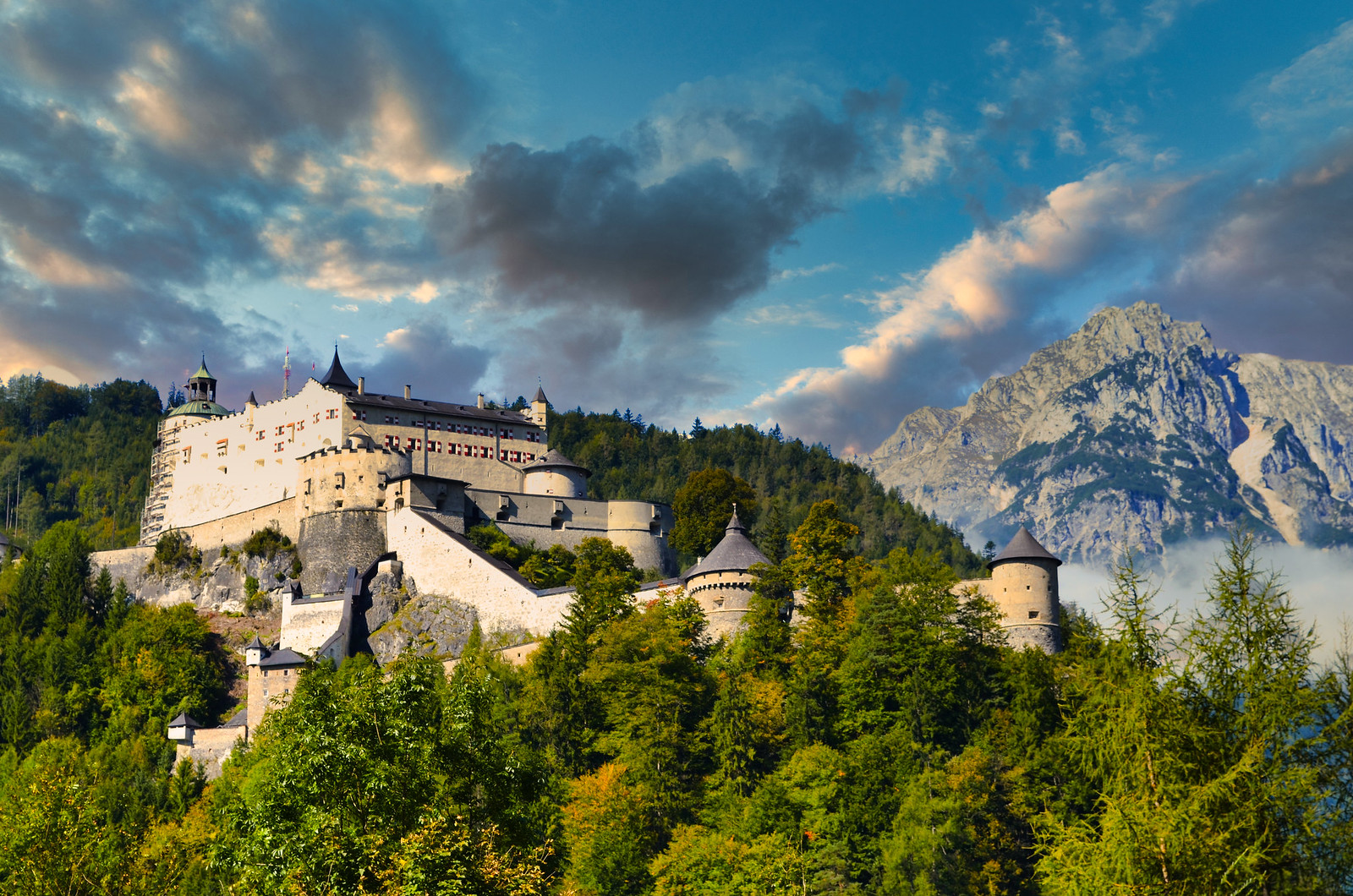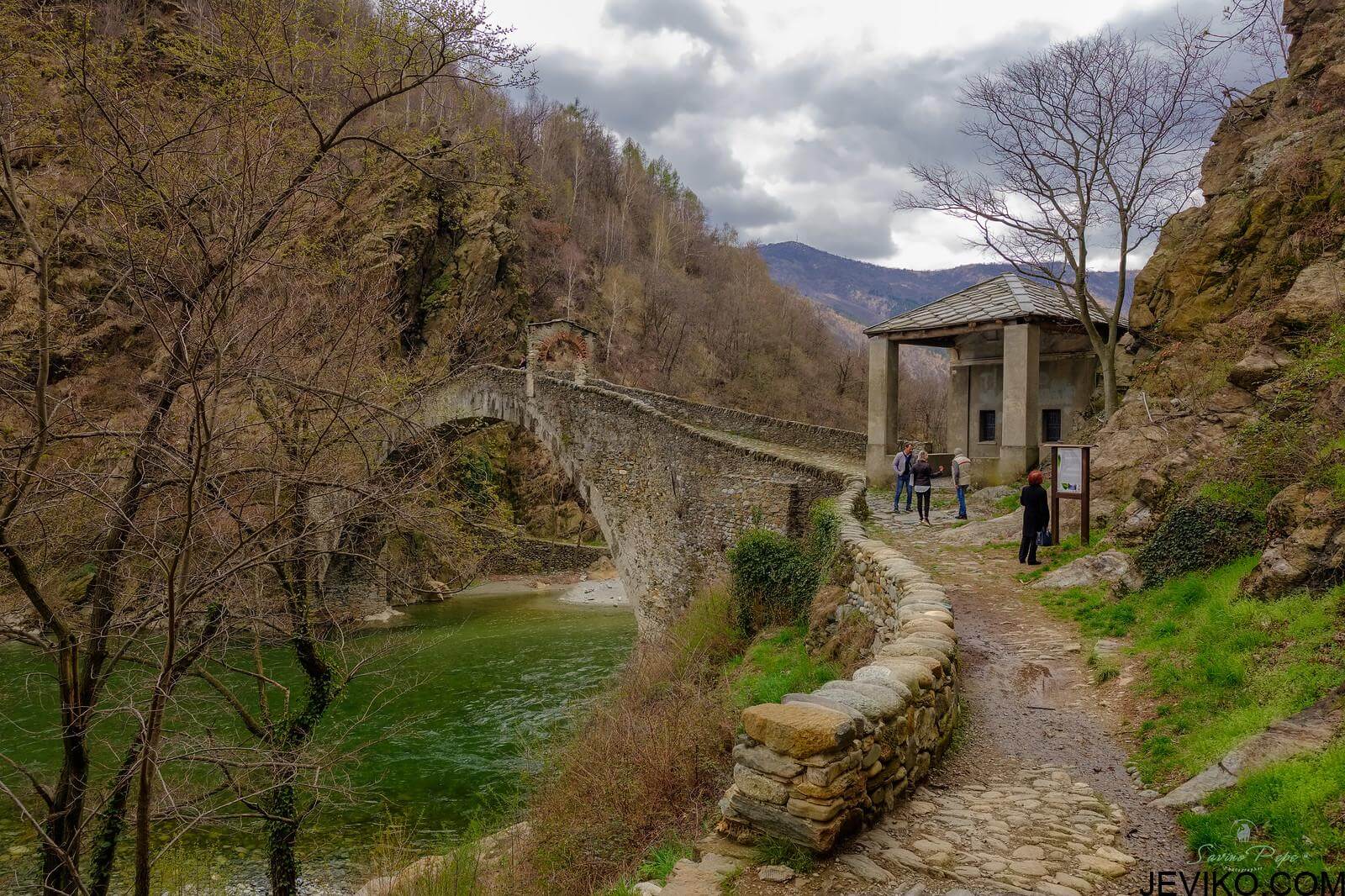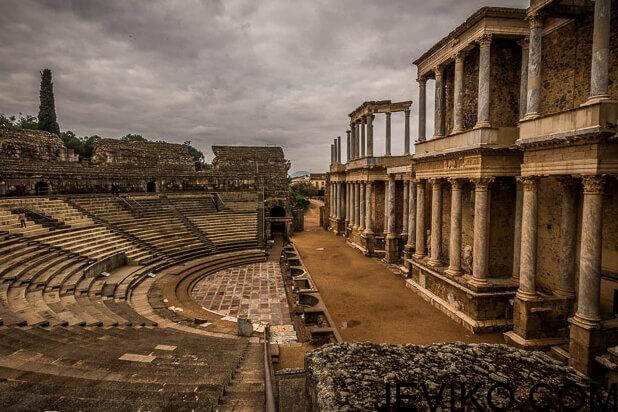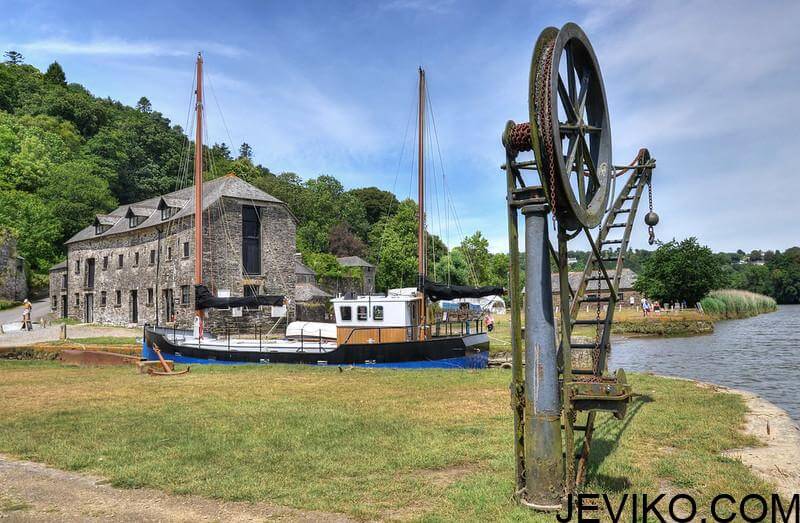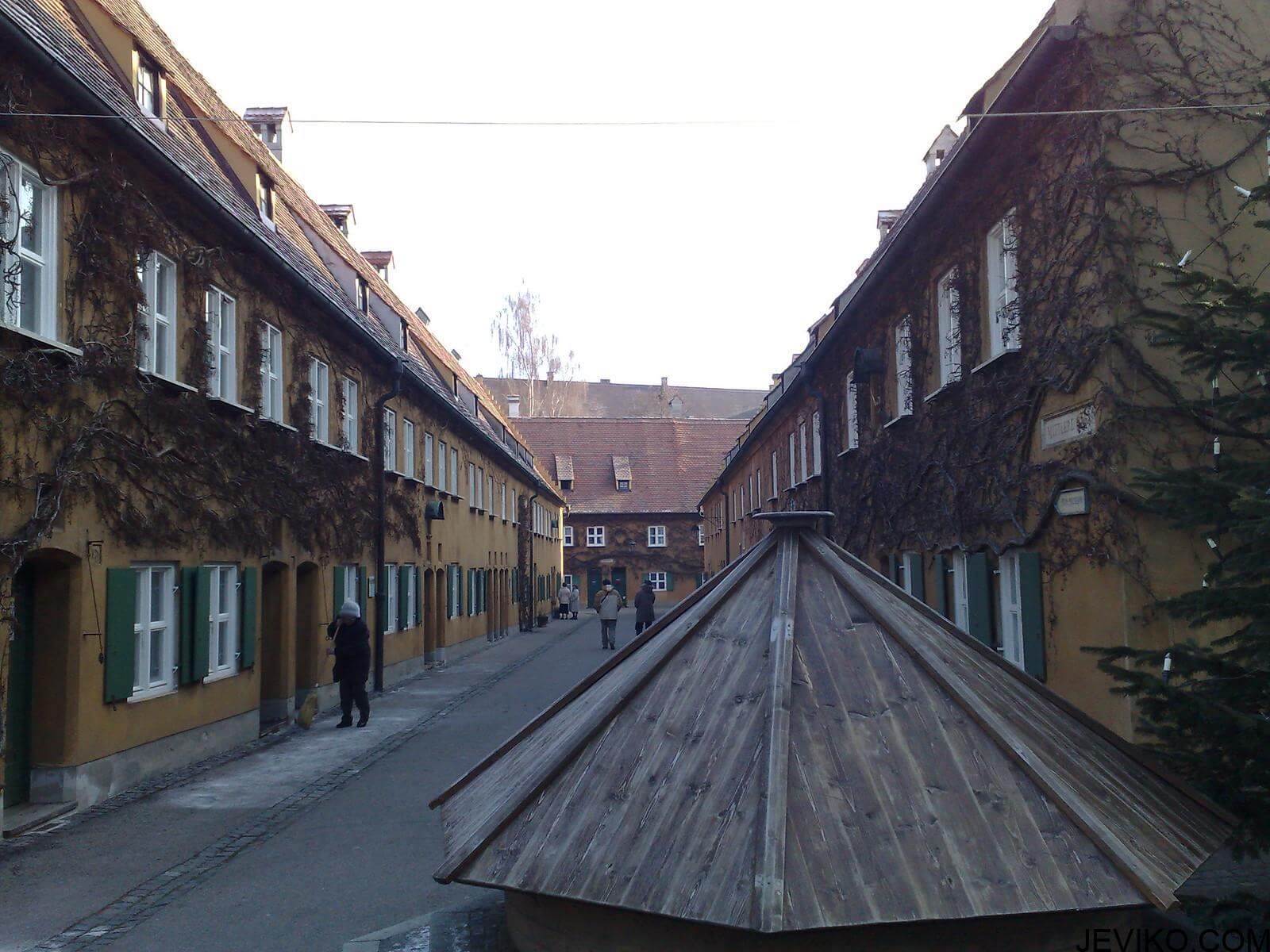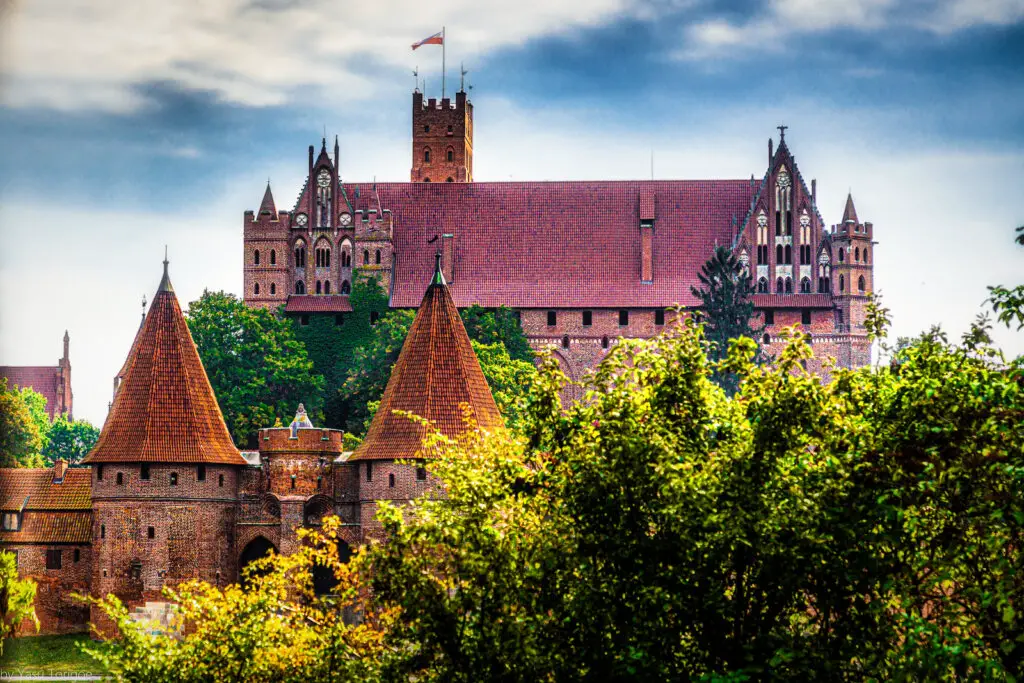
After crossing over the threshold of the first defensive gate, I walked over the wooden drawbridge to a cobblestone road. I then stopped to admire the tall, bricked walls surrounding me – not realizing that I was in the “kill zone.”
On top of the walls were wooden defense balconies, the perfect vantage point for crossbowmen to shoot invaders.
In front of me loomed a huge tower with a heavy iron-bound gate.
Behind this gate was an enclosed passageway with murder holes above for dumping scalding hot water and arrow slits on either side for defending archers.
As tourist in the 21st century, I was able to stroll past these imposing defensives and enter the courtyard, unlike the enemies of the Teutonic Knights 600 years ago. At that time, the passageway had an additional five iron-bound gates arranged behind one another and about 3,000 soldiers ready for battle.
The Largest Castle in the World
After taking in the fortifications, it was easy to see why Malbork Castle was never taken by force. Malbork Castle is the largest castle in the world by surface area which is about 52 acres (or 21 hectares). Entirely made of bricks, it consists of three separate fortresses – the High, Middle, and Lower Castles. Large moats and defensive walls with several towers surround the whole complex. On the western side, the Nogat River runs along the outermost wall. These days, the ticket office is located outside the eastern wall.
It was there that I met Bart, my enthusiastic tour guide. He was around 20 years old and had lived his entire life in the town. As a young boy, he even went to school in the castle’s converted stables. He knew the castle inside and out and the history of the Teutonic Knights who first built Malbork Castle in the 13th century. Malbork Castle is still the largest brick building in Europe, and in 1997, it became a UNESCO World Heritage Site.
The Teutonic Order
The Teutonic Order was a group of German monk-knights who began as a charitable organization in Palestine during the Crusades in 1190 and soon after became a military order. After the failure of the Christians to retake Jerusalem, the Teutonic Knights were invited by Polish King Conrad to fight in Prussia (modern day northern Poland) around 1230. He wanted their help to defeat raiding Prussian tribes and to Christianize the pagan people along Baltic coast. He never suspected that the Teutonic Order would later establish its own independent state and become Poland’s main enemy.
In 1309, the Order moved its headquarters to Malbork Castle and greatly expanded its fortifications. Although the Order was successful in seizing Prussian lands, their power declined after suffering a heavy defeat at the Battle of Grunwald in 1410. Yet, the Polish monarch was never able to capture Malbork Castle by force. In end, it was able to purchase the castle instead. In 1457, the Grand Master Ludwig von Erlichshausen handed Malbork Castle over to mercenaries deployed there since he was not able to pay them. They then sold it to the Polish King.
The Story of the Cannonball
The cannonball was my favorite story about Malbork Castle. Above the fireplace in the Summer Refectory (dining area), you can see a cannonball embedded into the wall. It crashed through a window during the 1410 siege led Polish King Wladyslaw Jagiello. Having been informed that the Grand Master was holding a meeting there, he ordered his gunner to aim for the only pillar in the hall.
I am grateful that he missed because the roof would have collapsed, destroying the entire grand hall. I would not have been able to see the cannon ball stuck in the wall or the impressive pillar that completely stretched across the ceiling. It would have changed the course of history too. For at that moment, the most important defense commanders of the Teutonic Order were conducting a secret meeting. The king was counting on killing them all, knowing that the castle would not last a day without them. Although the Teutonic Knights never discovered who had informed on them, they did find the spy’s signal. On a windowsill facing the besieging force was a huge, red hat – something akin to court jester’s cap. This story only reaffirms my suspicion to never trust clowns.
Malbork Castle’s Original Bathrooms
Bart was also able to decipher various medieval signs throughout the castle. A little devil crossing his legs was a sign for the bathrooms. His goatee pointed in the direction of their location which led us down a long corridor about 169 feet long.
We also had to climb several steps up the Gdanisko Tower. The bathrooms looked like wooden outhouses, furnished with cabbage leaves which were used as toilet paper. I haven’t been able to look at a salad the same way ever since.
Life at Malbork Castle?
Life at Malbork CastleWhile listening to Bart, I also imagined what life would have been like at Malbork Castle under the Teutonic Order. I could easily see myself as a fearless knight. As a woman, I most likely would have been a nun working in the castle’s infirmary.
Another option would have been a spy because of my height. The Grand Master would employ “little people” to do this kind of work. He had installed a small niche with a peep hole hidden behind a dresser in his bedroom. A small person would hide there to spy on those in the Great Refectory on the other side. Then again…being crammed behind a dresser does not sound like fun.
I guess the only job for me would have been the position of the Grand Master. Yes, this was designated to males only, but don’t I look good in his chair?
One Day Was Not Enough
Five hours later from when I entered the first defensive gate, Bart finally ended to tour. I could tell he had more stories to share, but it was time for him to return to the modern world. I, on the other hand, wanted to stay in the Middle Ages. So, I continued to explore other parts of the castle.
I had to pay an extra fee to climb up the tallest lookout tower, but the view from the top was worth it. The air was fresh, but the wind was much stronger at the top too. As it blew around me, I started getting cold. But I quickly forgot that when I took in the sight of view. I could look down into the courtyards of the High and Middle Castles. Looking past the calm Nogat River, the neighborhoods were quiet and the countryside peaceful – a stark contrast from when the Polish and Lithuanian armies had set up camps there during their siege.
I also spent some time in each of Castle’s gift shops, but it was difficult to resist buying their amber jewelry. Especially after visiting the Castle’s Amber Exhibition where I learned about how the stones were formed and the role of the Teutonic Order in its trade. At one point, they controlled a monopoly over Amber trade which helped financed their military campaigns.
I wanted to stay longer, but I noticed that the castle employees were locking up. I made it out just before the locked me inside. Exiting Malbork Castle, I noticed a sign, “One day is not enough is more than just a marketing slogan.” It was right. I don’t think I saw half of what the castle had to offer. Nevertheless, I saw enough to appreciate the Teutonic Knights and their Malbork Castle.

